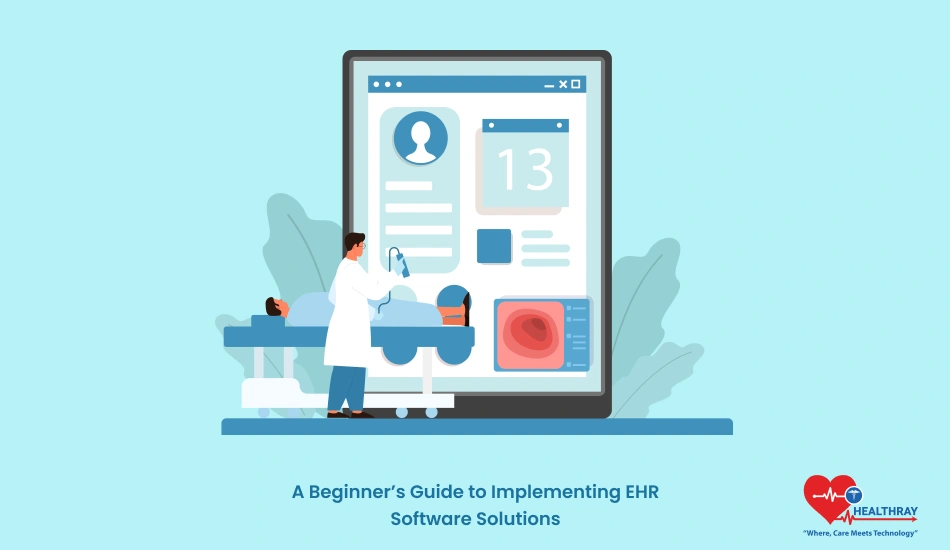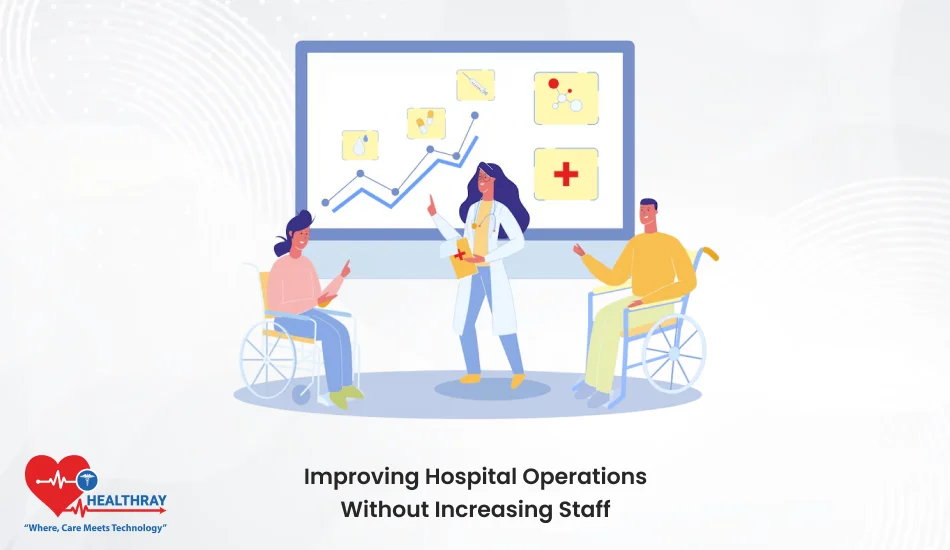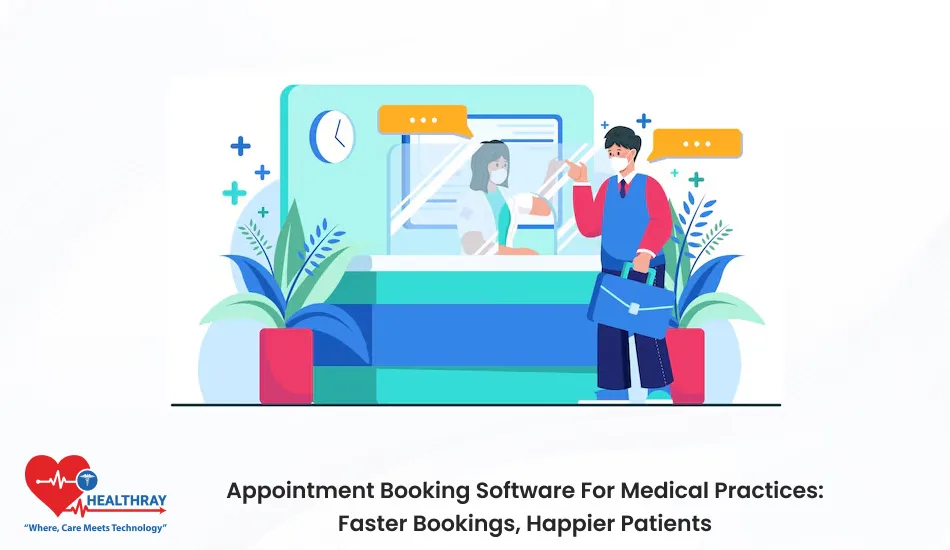It is a novelty, in the range of management of patients data, optimization of the effectiveness and safeguarding of the patient. However, is it actually very overwhelming to use EHR software in a small practice or clinical when the proliferation of commercially available systems is taking place.
This guide is designed to make that process simpler. We’ll take you through everything [of] the information you can possibly access concerning EHR software – how important [and] how to smoothly integrated EHR software into your practice. Whether you’re a healthcare provider, clinic administrator, or an IT manager stepping into healthcare, you’ll find practical steps to make EHR work for you, avoid common pitfalls, and enhance the way you handle patient care.
Here’s what’s ahead: we’ll explore the benefits of EHR, guide you on choosing the right system, lay out a step-by-step plan for implementation, and cover the challenges you might face along the way. By the end, you’ll have a roadmap for implementing EHR effectively without disrupting your workflow.
This synopsis goes into EHR software and its most relevant advantages to small practices.
Electronic health record (EHR) software is an information processing system, which allows the health care professional the ability to log, to control, to enter, and to find patient data anytime. Medical record software allows you on the one hand to access the patient’s medical information, not only at the time, but also in any situation in real time, including laboratory data outside of the regular office hours. All of this may lead to a more streamlined workflow, and better patient care, for a busy practice.
Key Benefits of EHR for Small Practices
Improved Patient Care
Using EHR, it is possible to gain access to all of a patient’s information at a speed which reduces errors and leads to better treatment quality. For optimal decision making, it is easier to maintain records of prescription medications, allergies and past diagnoses.
Streamlined Workflow
EHR eliminates the need for endless paperwork. Patient records are very easy to draw, modify, and therefore very easy to be shared with authorized personnel. Not only it saves time, it can also release your team from manual workload to dedicate to patient care.
Enhanced Compliance and Security
Compliance is among the main benefits of EHR systems. The most robust EHR programs have security at the core of their design for privacy and data security of the patient data because of their risk (HIPAA) compliance. Regarding moral and legal principles, this offers comfort.
Easier Data Retrieval and Reporting
Is there a need to get past medical history or update their status? EHR software makes data instantly accessible. Additionally, a lot of systems come with integrated reporting features that can provide information about treatment results, appointment schedules, and patient demographics.
Reduced Costs Over Time
EHR systems can initially be costly to implement, but will ultimately result in cost reductions. The one commonly practiced current approaches is reduction of the number of errors that lead to time and money consuming re-treatments or law suits and the costs associated with paper products, storage, and clerical needs.
Recognizing these benefits and opportunities can help the imagination of the potential for EHR, and how EHR can change your practice. By providing the right EHR system, small practices can be run more efficiently, have greater compliance, and provide better patient care.
Understanding Your Needs: Key Factors to Consider Before Choosing an EHR Solution

Selecting the right EHR software is more than just picking a popular name. The choice of the best electronic health records, is the system that best fits your practice’s individual requirements. However, it is of paramount importance to first know what your practice will benefit most from, in order to select a system that is both practical and maintainable.
Identify Practice-Specific Needs
First, please describe what is most relevant to your practice since each has unique requirements. Are you seeing a lot of patients? Are there any specialized services you provide that call for unique workflows? This is the list of “required” and “good-to-have” features according to requirements. Examples include emphasis on speed of data entry for the busy clinic environment, but also emphasis on more sophisticated imaging features, for example.
Integration with Existing Systems
Software for scheduling, billing (or telemedicine) is now being used in a significant number of practices. It is essential to make sure that your EHR is able to be integrated with these applications, to prevent process/data entry redundancy. It is also useful for the vendors to ask about the vendors’ system integrations and whether they would be able to easily integrate the vendor’s system to the vendors’ current setup.
User-Friendliness and Accessibility
EHR software must become easier, not harder, if your group is going to actually get a job done day in and day out. Ease of use and good interface are crucial, particularly in a small practitioner practice where staff wear multiple faces. Get demos/free trials” from vendors so that one can have an experience of the user friendliness of those systems before making a final decision.
Customization Options
No practice is the same and your EHR is not. Certain EHR Solutions have the capability to support templates, customizable workflow or configurable documentation templates. This adaptability means that you can adapt the system to fit your practice’s workflow, which can be highly advantageous for ensuring that your current workflow is not disrupted.
Support and Training Requirements
There is a significant change in the adoption of an EHR, and you need to ensure that your entire team can work the EHR comfortably. Vendors have historically offered webinars, face-to-face workshops, or seminars that would deliver an update to all attendees. In addition, consider the vendor support provided, especially during initial phases of deployment. Rehabilitative strength may stop small problems from escalating into big ones.
Budget and Long-Term Costs
Finally, consider the overall cost. Although, because of the higher upfront cost, some EHR can be temptingly low cost, they are not without a cost in many areas, like maintenance or subscription fees. Consider your budget and match it with the value provided by each system over time. There, often tiered offerings available from many vendors, so be sure to inquire if there’s a way to start with a basic level and upgrade as your practice expands.
By carefully evaluating these factors, you’ll have a better understanding of what your practice needs in an EHR solution. It’s not just about having a good EHR, but finding one that is right for your workflow, your team, and for your pocket.
Key Steps for Implementing EHR Software in Your Practice
Planning and preparation are also needed to carry out the systematic, directed change process to move from paper medication to EHR software. Provided by means of a gradeslið and therefore by circumnavigating the usual unavoided operational obstacles, it is possible to reach a more seamless ramp and thus a higher, less likely incidence of operational disturbances. To prepare practitioners to move through the EHR implementation experience, the following roadmap is presented.
Planning and Goal-Setting
Start with clear goals. Why are you implementing EHR software? What kind of changes would you like to see, such as less paper, faster patient checking, or better security around data? For this reason, when the goals are to be measurable it is useful to specifically define results that are measurable, in order to keep the team’s alignment and goals, and in order to be able to retrospectively also assess their progress in subsequent stage.
At the beginning of the planning phase designate primary planning staff (medicine to administration). Empowering employees can lead to higher engagement, earlier identification of problems, and making sure all employees have insight into the effect the change will have on them.
Vendor Selection and Contract Negotiation
Choosing the right EHR vendor is a critical step. Review multiple options to compare features, flexibility, and cost. Arrange demonstrations so as to personally witness what each system does. Identify which solution is most suited for your unique requirements, as defined earlier.
When it comes to the law of contracts, particular attention must be paid to the problems for support, data ownership, and up gradation costs, and so on. Ideally, a positive frame should be negotiated from the start in order to avoid the occurrence of unexpected cost and to verify the right to access data.
Data Migration and System Setup
Migration of patient data from paper or an older system to a new EHR Solutions does take some time, but it has to be done before a successful go-live can be achieved. Work with your vendor on a safe transfer of the data and verify the mapping of data in order to avoid conflicts or loss of data.
In setup, model the system to reflect your workflow in theory as it performs in reality. Creating form, template, and field customisation can now be a tremendous time saver in the future and will therefore enable the EHR system to be a help instead of a hindrance towards its process.
Staff Training and Onboarding
Although may be underemphasized, training is an important staging factor in successful EHR implementation. Bespoke training for individuals within the team is required as various teams are likely using the system in diverse ways. Although training for initiation is provided by hundreds of vendors, recurrent training or refresher courses should be considered even for complex features.
Positively coach team members to query and complain during training. It is possible to address these concerns relatively early and these will help reduce frustration and resistance, and also facilitate a smoother transition overall.
Testing and Go-Live Preparation
Testing should be conducted before official release to verify if the system is working as it should. Test for functionality, data accuracy, and usability. Provide staff with the ability to practice system use and gain feedback to complete the edits.
Create go-live checklist covering every step starting with data backup to confirming vendor support is available. Being prepared to handle any possible technical glitches has a reassuring effect and it is also reassuring to have the capability for healthcare professionals to cope with some small complications that do not disrupt the patients’ care.
Monitoring and Ongoing Optimization
After its launch continuous monitoring of system performance is of great importance, and continuous feedback from the staff is needed. Describe important measures, e.g., appointment processing time, patient satisfaction rate and remaining areas of concern, e.g. This information allows the following optimizations of workflows, or resolution of technical problems.
Continuous improvement is part of the EHR journey. With regular evaluations, you’ll be able to make adjustments that keep the system aligned with your practice’s goals and enhance its impact over time.
Conclusion
Implementation of an EHR might look like a monumental undertaking for a small or a large healthcare practice, yet it is a step that yields some truly valuable results in the end. With attention to planning, appropriate vendor selection, prioritization of training, and support, the practice approaches a more efficient workflow, enhanced patient care, and a foundation for future growth.
Clear goals and a step-by-step approach will ensure that every part of the implementation process is aligned with the needs of your practice. Ongoing optimization of the gains is possible by periodic feedback on the effect of the EHR in the form of metrics, and adjustments.
From optimising booking to better engagement with patients and even leading the industry with telemedicine and data analytics management, the Hospital Management System offers a adaptable and potent resource. Just be patient and take the route, step by step your practice will get closer to a consistent, secure, and updated mode of delivery in health care.





